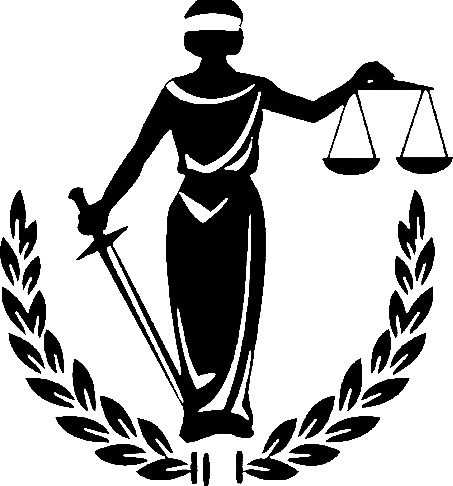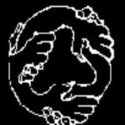- Home
- All the way with Adam
- Analysing Trump-Turnbull Phone X-change
- Are we there yet ?
- Australia's diminishing political capital
- Boat turnback bribery and predictable silence
- Causes for Refugee Movements: Political Interference
- Corrupt Syndicate and Cover-ups
- Crimes of Secretary of DIBP (2011-2014)
- Details on Fazel Chgeni case:
- Election Season and Boat Secrecies
- Elephants and Lies -- Xmas season 2017
- End Offshore Slavery
- Evacuate the Asylum-seekers from Offshore Detention Centres
- Future for PNG Asylum-seekers
- Growing List of Hero Doctors
- Honesty is the best policy on payments to smugglers
- Lady Justice shines on the Pacific
- Lectures and Pressures
- Lets shine our solidarity on Manus Island and Nauru
- Lies, Spins, Cockroach and Rodents
- Ltr to Andrew Wilkie and Adam Brandt MP
- Media monopoly and conspiracy of silence
- Media monopoly: blackout vs spotlight
- Nauruan MOU and Dabwido -- Devil not in Him
- No Lecture, More Pressure
- OSB and Public Interest Immunity
- OSB, Turnbacks and Political cover-ups
- On wherever of the Internet
- Pacific Solution for Justice
- Refugees, Trust and Faith
- Royal Commission on Offshore Processing Regime, an initiative worth supporting
- Serving the Horizontal Outreach
- Shedding some light on OSB
- Should Dutton be sacked for adopting Cockroach Agenda
- Standing up for Refugees ? Set up a FB Group and Becomes Human Rights Information Retailer:
- The 2018 Unpacking of Xmas Lies
- The Syndicate of Corruption
- The myths, secrecies and refugee policy
- The scandal at hand
- Trade Your Vote for Refugees
- Treasonous minions
- UN Refugee Convention and Huston Report 2012 , a case of public mood-swings and government policy shift
- Virtual Communities - All about Respect
- Who gonna park on that spot ?
- Witchcraft behind the Spin
- Put yourself in Indonesian's shoes
- Australian Government's bribery payments to people smugglers
- Boat bribery payments and motives behind
- Labor, Liberal and Mandatory Detention Policy
- The Irony of Australian Government's "Tough on Crimes"
- Tilting at Canberra Windmills
- Why my polly is so silent
- The ALP Position on asylum-seekers detained offshore
- The Cowards of Australia
- Refugee Policy Moonwalks and ALP
- A Lie is a 'Lie' and a Crime is a 'Crime'
- Attributions
- AFP and ICC
- (2022-Sep) OTP-ICC Preliminary finding and Request for ICC jurisdiction
- (2018-Apr) Additional Submission to ICC re: Enslavement
- (2017-Jun) Enslavement in Manus Island and Nauru
- Dob-in to International Criminal Court
- Request ICRC to Evacuate Asylum-seekers
- Rome Statute Article 25 on Individual Responsiblity
- STATE OF TORTURE LAW IN AUSTRALIA
- Urgency on Offshore Situation
- Bomana
- Asylum Processing Under PNG/Naurual Laws: Lawful or Unlawful?
- Freedom Yours, Justice Ours
- LEGAL REMEDY FOR DETAINEES IN KP, MANTRA & ITAs
- ERRONEOUS OFFSHORE LAWS
- LIBERTY - BROADENING THE SCOPE
- EXECUTIVE EMERGENCY POWER, COMMON LAW AND ALIENS
- Bomana53# and Convention Obligation
- Legal Boundary of Offshore Processing Regime
- HCA Failed Offshore Detention Challenge S195/2016
- UNORG
- (Feb 2022) Submission to Human Rights Council and Special Rapporteur on Slavery
- (Sep-2019) Letter to UN Secretary-General Guterres
- (Sep-2018) Letter to President of Nauru and Prime Minister of New Zealand
- (Aug-2019) Resettlement Appeal to European Council
- (Jul-2019) Letter to Canadian PM Justin Trudeau
- (Dec-2017) Letter to President of ICRC
- Slavery
- Deaths in Detention
- Archived: 1992-2004
Enslavement: Core Violations and Indicating Factors
To those who think, "Slavery must be associated with exaction of labour", above mentioned judgement is saying that it is not always the case. Exploitative labour condition can only be an indicating factor -- Factor Indicia -- for slavery.
In recent weeks, I have promoted, with my own limited resources, this Offshore Enslavement banner on Facebook, in an attempt to reach out to the general public. Some viewers have responded to this message of slavery. The majority appeared in shocked or outright disbelief; responding with "Bull sh*t", "crap", "nonsense" or put it as merely a "joke". This is understandable because the slavery in Australia has been outlawed since 1833 by King William IV, decades even before the federation. On the one hand, the word "slavery" carry much political currency that any mischievous social activists might have intentionally "misuse" to attract public attention; so therefore that was such caution by the public. In any case, most Australians are aware that the crime of slavery is serious and it will attract severe penalty.
Few other readers, however, reject the message on the ground that the offshore asylum-seekers "Do not have to work" and therefore there is no slavery. For them, there must be exaction of labour: the slave must work (so that the slave-owner could benefit).
Exaction of Labour: Factor Indicia
When we had a look at the ICC Rome Statute, Elements of Crime 7 (1) c, the Enslavement is defined as [#1]:
"The perpetrator exercised any or all of the powers attaching to the right of ownership over one or more persons, such as by purchasing, selling, lending or bartering such a person or persons, or by imposing on them a similar deprivation of liberty.[fn, 11]"
The Footnote [11] of text said:
"It is understood that such deprivation of liberty may, in some circumstances, include exacting forced labour or otherwise reducing a person to a servile status as defined in the Supplementary Convention on the Abolition of Slavery, the Slave Trade, and Institutions and Practices Similar to Slavery of 1956. It is also understood that the conduct described in this element includes trafficking in persons, in particular women and children. "
The main thrust of ICC law is the perpetrator (slave-owner) exercising "any or all the powers attaching to the right of ownership" over enslaved person (i.e. slave). The perpetrator exercising such "powers attaching to the right of ownership" over an enslaved person will result the "deprivation of liberty". In other words, the perpetrator, behaving as if he/she owned a person, begin manipulating and enforcing that person, resulting the enslaved person has loss his/her freedom in a substantial manner.
Therefore, in slavery, the exaction of labour from a person is only possible when the perpetrator "legally owned that person (de jure)" or, by some other means, "being able to enforce the ownership on that person (de facto)". Therefore, the exaction of labour is NOT a primary requirement for the slavery. The exaction of labour is to be seen as one of the consequences of the perpetrator (slave-owner) exercising powers attaching to the right of ownership over a person (slave). Then again, by themselves, not all "1. harsh and exploitative labour condition" nor "2. restriction on the freedom of movement (detention)" can tantamount to slavery. There MUST be the instance(s) of the exercise of powers mentioned above to constitute slavery. These legal constraints have been cautioned by the judgement of High Court of Australia on the Case of Wei Tang, the owner of Club 417 Brothel in Melbourne (2008) [#2, #3]:
"It is important not to debase the currency of language, or to banalise crimes against humanity, by giving slavery a meaning that extends beyond the limits set by the text, context, and purpose of the 1926 Slavery Convention. In particular it is important to recognise that harsh and exploitative conditions of labour do not of themselves amount to slavery. … An employer normally has some degree of control over the movements, or work environment, of an employee. Furthermore, geographical and other circumstances may limit an employee’s freedom of movement. Powers of control, in the context of an issue of slavery, are powers of the kind and degree that would attach to a right of ownership if such a right were legally possible, not powers of a kind that are no more than an incident of harsh employment, either generally or at a particular time or place."
To those who think, "Slavery must be associated with exaction of labour", above mentioned judgement is saying that it is not always the case. Exploitative labour condition can only be an indicating factor -- Factor Indicia -- for slavery. On our case of Manus/Nauru asylum-seekers, we may necessarily look for some indicators other than forced extraction of labour to identify the slavery.
Slavery laws at Home
The slavery laws in Australia is ways ahead of 1926 Slavery Convention. The Australian laws already has recognized the 'de facto' slavery. Excerpt from HCA judgement on Wei Tang (2008) [#2, #3]:
"... the reference to powers attaching to the right of ownership, which are exercised over a person in a condition described as slavery, is a reference to powers of such a nature and extent that they are attributes of effective (although not legal, for that is impossible) ownership."
The way I see it, the Australian Government indirectly exercising the powers of ownership over offshore asylum-seekers is fitting in well with this kind of 'de facto slavery' definition.
True to the crime against humanity, the Australian offshore enslavement is seen to be involving core violations of slavery laws, along with massive arrays of indicating factors.
Friends, I have gathered legal resources re: slavery for you to have a look and study. For HCA judgement on Queen vs. Tang, may I suggest you to read first, the case note written by Prof. Jean Allain of QUB.
Regards, U Ne Oo, NetIPR.
http://www.aus4iccwitness.org/node/64
[#1] ICC Rome Statute, Elements of Crime
http://www.aus4iccwitness.org/legal-resources/2011_icc-elements-of-crime...
[#2] Case Note on Queen v Tang, by Jean Allain
http://www.aus4iccwitness.org/legal-resources/20090101_case-note-on-quee...
[#3] The Queen vs. Tang, HCA judgement
http://www.aus4iccwitness.org/legal-resources/20080828_the-queen-vs-tang...
LATEST UPDATE
Common law aspects of the doctor-patient contractual relationship in connection with the patient's natural (inalienable) rights in medical treatment. Examine Commonwealth Government's healthcare provision in offshore immigration detention based on the common law doctor-patient contract. Open public license 4.0 applied all content.


FEATURED
Collection of evidence and cases on detention slavery. Have chosen pieces of evidence that are reliable so that one can submit directly to the tribunal of fact. All evidence is taken from verifiable sources only. Two examples of enslavement with medevac delays on Faysal Ishak Ahmed and Samuel. Open public license 4.0 applied all content.


FEATURED
Australia's offshore processing scheme is interpreted within the context of enslavement of asylum-seekers. Starts with the applicability of Australian slavery laws at offshore settings, compare international and domestic slavery laws. Then, identify offshore medevac delay incidents as the indicators for slavery. Elucidate such delay incidents as violation of natural rights of human person, and that of Torture Laws and Slavery Laws.



